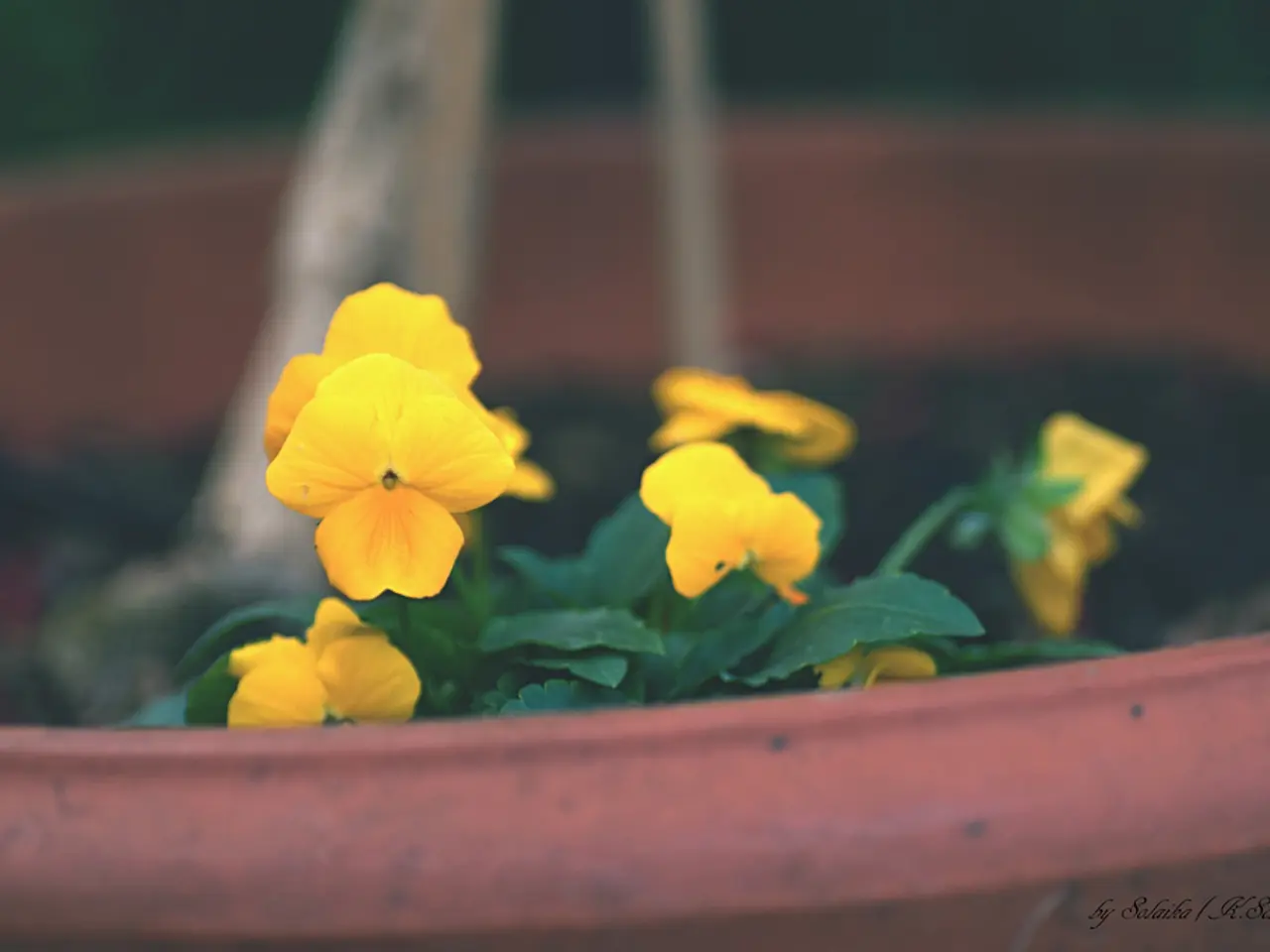Techniques for Multiplying Orchids: Explore 4 Methods to Expand Your Orchid Collection
Growing Orchids: A Comprehensive Guide to Propagation Methods
Orchids, with their diverse range of species and growth habits, can be a fascinating addition to any garden. In this article, we will explore the various ways to propagate these captivating plants.
Main Types of Orchids by Growth Habit
Orchids can be broadly categorized into four main growth habits: epiphytic, terrestrial, lithophytic, and saprophytic. Each growth form influences the appropriate propagation methods.
- Epiphytic orchids grow on trees or other plants without causing harm. Examples include many Oncidiums and Cattleyas.
- Terrestrial orchids grow in soil on the ground.
- Lithophytic orchids grow on rocks.
- Saprophytic orchids derive nutrients from decaying organic matter.
Common Orchid Genera and Examples
There are over 28,000 identified orchid species classified into about 800 genera. Here are some examples:
- Grammatophyllum speciosum (giant orchid/tiger orchid) is epiphytic and native to Southeast Asia.
- Oncidiums, often epiphytic, favor warm, moist environments with bright indirect light and are commonly propagated by division or keikis (plantlets on the stem).
- Bulbophyllum species are usually epiphytes as well and have specific propagation needs.
- Jewel orchids like Ludisia discolor are grown for foliage and can be propagated by stem cuttings or division of root systems.
Propagation Methods
Orchids are most often propagated vegetatively, through cuttings or division, in home cultivation. Here are some common methods:
- Division — Separating a mature plant into smaller parts, each with roots and shoots. Suitable for sympodial orchids (those that grow horizontally and produce new shoots at the base of older pseudobulbs), such as Cattleyas, Oncidiums, and Grammatophyllum.
- Keiki propagation — Some orchids, like Phalaenopsis and certain Oncidiums, produce keikis, which are small plantlets that can be separated once roots develop.
- Stem cuttings — Common in jewel orchids (e.g., Ludisia), where a stem segment with a few nodes roots to form a new plant.
- Seed propagation — Requires sterile lab conditions due to the fine, dust-like seeds; mostly done by commercial growers.
Matching Orchid Type to Propagation
| Orchid Type | Growth Habit | Typical Propagation Method(s) | Notes | |----------------------|---------------------|---------------------------------------------|-------------------------------| | Cattleyas, Oncidiums | Mostly epiphytic | Division, keikis | Sympodial growth; suitable for division | | Phalaenopsis | Epiphytic | Keiki, tissue culture | Monopodial growth; division not common | | Grammatophyllum | Epiphytic | Division | Large pseudobulbs tied to division | | Ludisia discolor | Terrestrial | Stem cuttings, division | Jewel orchid; grows in soil-like media | | Bulbophyllum | Epiphytic | Division, sometimes keikis | Requires specific humidity care |
How to Identify an Orchid’s Propagation Method
- Determine growth habit (epiphytic, terrestrial, etc.).
- Check whether the orchid grows sympodially (with pseudobulbs) or monopodially (single stem):
- Sympodial orchids can be divided.
- Monopodial orchids propagated via keikis or seed.
- Look for keikis or offsets, which indicate vegetative propagation.
- Stem cuttings apply mainly to some terrestrial types like jewel orchids.
- If unsure, refer to species-specific care guides since orchids’ propagation can vary greatly by genus and species.
In summary, epiphytic sympodial orchids (like Oncidiums, Cattleyas, Grammatophyllum) are best propagated by division or keikis, while terrestrial orchids such as Ludisia can be propagated by division or stem cuttings. Identifying the orchid's growth habit and genus will guide the most appropriate propagation method.
Proper orchid care is essential in nurturing both the seedlings and the parent plants. Encouraging keikis is a method for propagating monopodial orchids, where plantlets grow from the flowering stem. Some gardeners are successful at taking stem cuttings for propagation. However, growing orchids from seed requires specialized conditions and a sterile environment.
Orchids may be grown from cuttings, but this method is controversial and has varying success rates. To obtain germination at home, the seeds will be placed in a clear flask in a jelly-like agar substance. Once the cutting has a full complement of roots, it is time to pot it up. When roots are visible, each seedling needs to be transplanted into a new container containing the agar jelly. Keikis look like a flower spike initially, but they will soon form leaves and aerial roots.
To encourage a keiki, cut the spent stem above a stem internode and move the plant to a slightly dimmer location. Avoid doing this until the seedlings are large enough to be handled. Eventually, young orchids can be repotted in containers filled with orchid potting mix.
In conclusion, understanding the growth habits and propagation needs of orchids will help you successfully cultivate these captivating plants in your own garden. Whether you choose to propagate by division, keikis, stem cuttings, or seed, remember that proper care is crucial for the health and growth of your orchids.
Orchids with sympodial growth habit, such as Oncidiums and Cattleyas, can be propagated effectively through division or keikis, given their growth as epiphytic plants.
Gardeners may choose to propagate terrestrial orchids like Ludisia discolor using stem cuttings or division, as these orchids grow in soil-like media.




